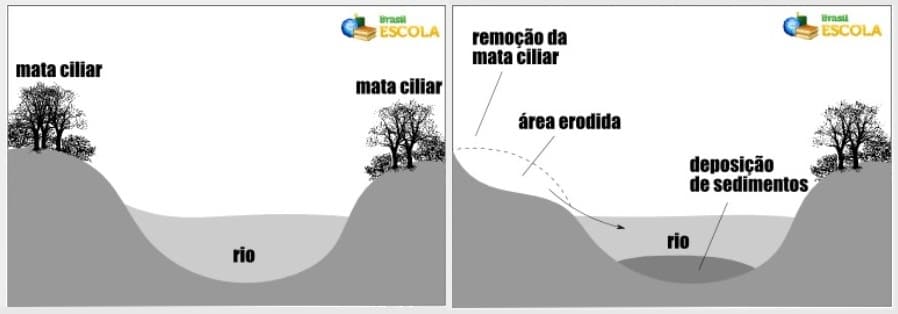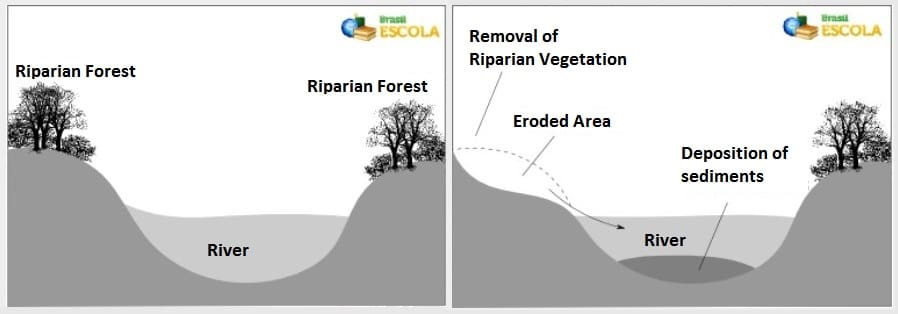|

O Assoreamento é o processo em que cursos de água são afetados pelo acúmulo de sedimentos, o que resulta no excesso de material sobre o seu leito e dificulta a navegabilidade e o seu aproveitamento. Originalmente, esse é um processo natural, mas que é intensificado pelas ações humanas, sobretudo a partir da remoção da vegetação das margens dos rios.
O processo de assoreamento costuma ocorrer da seguinte forma: com as chuvas, o solo é lavado, ou seja, a sua camada superficial é removida, e os sedimentos (partículas de solo e rochas) são transportados por escoamento em direção aos rios, onde são depositados. Quando não há obstáculos para esses sedimentos, função geralmente exercida pela vegetação, uma grande quantidade é depositada no fundo das redes de drenagem.
Esse material depositado é levado pelo próprio rio e, quando encontra locais mais planos, onde a velocidade do curso de água não é muito acelerada, deposita-se no fundo, acumulando e, eventualmente, formando bancos de areia ao longo do curso de água. Quando a quantidade de sedimentos é muito grande e pesada, eles transportam-se por rolamento (no fundo dos rios) ou se acumulam no leito normal, trazendo prejuízos ao escoamento fluvial.
Quando o ser humano remove a vegetação, principalmente a mata ciliar (a vegetação que se encontra nas margens dos cursos de água), o processo acima citado intensifica-se, além de gerar o surgimento de erosões nas proximidades do próprio rio, conforme ilustram as imagens a seguir:

(retirado de Brasil Escola)
|
|

Siltation is the process where water bodies are affected by the accumulation of sediments, resulting in excess material on his bed and hinders navigation and its use. Originally, this is a natural process, but that is intensified by human actions, especially since the removal of the riverbanks vegetation.
The process of sedimentation usually occurs as follows: with the rain, the soil is washed, or its surface layer is removed, and sediments (particles of soil and rock) are transported by flowing into the rivers, where they are deposited. When there are no obstacles to these sediments, function usually exercised by vegetation, a large amount is deposited at the bottom of the drainage networks.
This deposited material is carried by the river itself, and when it finds more local plans, where the velocity of the stream is not very accelerated, deposits in the background, accumulating and eventually forming sandbanks along the course d ' water. When the amount of sediment is very large and heavy, they carry up by rolling (at the bottom of rivers) or accumulate in normal bed, bringing damages to the river flow.
When man removes vegetation, mainly riparian vegetation (vegetation that lies on the banks of watercourses), the above process is intensified, and generate the emergence of erosion near the river itself, as illustrated the following images:

(From Brasil Escola)
|